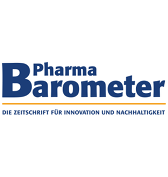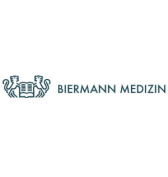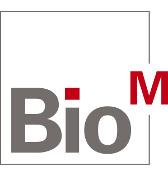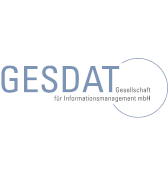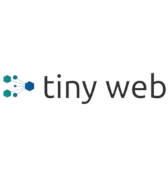Findings to be featured in a late-breaking proffered paper session at European Society for Medical Oncology (ESMO) Congress 2022
RAHWAY, N.J. & NUTLEY, N.J.–(BUSINESS WIRE)–Merck (NYSE: MRK), known as MSD outside of the United States and Canada, and Eisai today announced the first presentation of results from the final analysis of the Phase 3 LEAP-002 trial investigating KEYTRUDA, Merck’s anti-PD-1 therapy, plus LENVIMA, the orally available multiple receptor tyrosine kinase inhibitor (TKI) discovered by Eisai, versus LENVIMA monotherapy as a first-line treatment for patients with unresectable hepatocellular carcinoma (uHCC). Results are being presented during a proffered paper session at the European Society for Medical Oncology (ESMO) Congress 2022, being held in Paris, France and virtually from Sept. 9-13 (abstract #LBA34).
In the final analysis of the trial, there was a trend toward improvement for one of the study’s dual primary endpoints, overall survival (OS), for patients treated with KEYTRUDA plus LENVIMA versus LENVIMA monotherapy; however, the results did not meet statistical significance per the pre-specified statistical plan (HR=0.84 [95% CI: 0.71-1.00]; p=0.0227). The median OS was 21.2 months (95% CI: 19.0-23.6) for KEYTRUDA plus LENVIMA and 19.0 months (95% CI: 17.2-21.7) for LENVIMA monotherapy. Additionally, treatment with KEYTRUDA plus LENVIMA resulted in a trend toward improvement in the trial’s other dual primary endpoint of progression-free survival (PFS) versus LENVIMA monotherapy; however, the results did not meet the pre-specified threshold at the first interim analysis for statistical significance (HR=0.87 [95% CI: 0.73-1.02]; p=0.0466).
“The LEAP-002 trial reflects our research strategy to build on evolving standards of care to further improve outcomes for more people with unresectable hepatocellular carcinoma,” said Dr. Gregory Lubiniecki, Vice President, Global Clinical Development, Merck Research Laboratories. “The median overall survival of 21.2 months seen with KEYTRUDA plus LENVIMA provides critical insights for further research into the potential role of this combination.”
“While the outcome is not what we had hoped, it is important for us to see that patients in the trial treated with LENVIMA monotherapy had a median overall survival of 19.0 months,” said Corina Dutcus, M.D., Senior Vice President, Clinical Research, Oncology at Eisai Inc. “Findings from the LEAP-002 trial will not only help advance our understanding and application of KEYTRUDA plus LENVIMA across our clinical development program but will also provide physicians with additional information on LENVIMA monotherapy’s use in unresectable hepatocellular carcinoma, where it is currently approved as a treatment option in multiple regions around the world, including the U.S., the European Union (EU), Japan and China.”
LENVIMA monotherapy is approved for the first-line treatment of patients with uHCC in the U.S., the EU and China and for patients with uHCC in Japan. The approval of LENVIMA was based on results of the Phase 3 REFLECT trial, which evaluated the efficacy and safety of LENVIMA versus sorafenib for the first-line treatment of patients with uHCC.
KEYTRUDA plus LENVIMA (marketed as KISPLYX® for renal cell carcinoma [RCC] in the EU) is approved in the U.S., the EU and Japan for the treatment of certain types of advanced endometrial carcinoma and advanced RCC. Merck and Eisai are studying the KEYTRUDA plus LENVIMA combination through the LEAP (LEnvatinib And Pembrolizumab) clinical program in multiple tumor types, including but not limited to endometrial carcinoma, HCC, melanoma, non-small cell lung cancer, RCC, head and neck cancer, colorectal cancer, gastric cancer and esophageal cancer, across more than 15 clinical trials.
LEAP-002 study design and final analysis results (abstract #LBA34)
LEAP-002 is a multicenter, randomized, double-blinded, active-controlled Phase 3 trial (ClinicalTrials.gov, NCT03713593) evaluating KEYTRUDA plus LENVIMA versus LENVIMA monotherapy for the first-line treatment of adult patients with uHCC. Patients were randomized 1:1 to receive KEYTRUDA (200 mg intravenously [IV] on Day 1 of each three-week cycle) plus LENVIMA (12 mg orally once daily [for patients with screening body weight of at least 60 kg] or 8 mg orally once daily [for patients with screening body weight less than 60 kg]); or LENVIMA (12 mg orally once daily [for patients with screening body weight of at least 60 kg] or 8 mg orally once daily [for patients with screening body weight less than 60 kg]) plus saline placebo (IV administered on Day 1 of each three-week cycle). LENVIMA was administered until progressive disease or unacceptable toxicity. KEYTRUDA/placebo was administered for up to 35 cycles (approximately two years).
The dual primary endpoints were PFS, as assessed by blinded independent central review (BICR) per Response Evaluation Criteria in Solid Tumors Version 1.1 (RECIST v1.1; RECIST v1.1 has been modified for this study to follow a maximum of 10 target lesions in total and a maximum of five target lesions per organ), and OS. Objective response rate (ORR), as assessed by BICR per RECIST v1.1, was a key secondary endpoint. The trial was designed with two interim analyses and a final analysis for OS. Pre-specified efficacy boundaries were one-sided p=0.002 for PFS at interim analysis 1 and p=0.0185 for OS at the final analysis.
As of the data cut-off for the final analysis (June 21, 2022), a total of 794 patients were enrolled and treated, with a median follow-up of 32.1 months (range, 25.8-41.1). A total of 534 OS events had occurred, with 36 patients (9.1%) in the combination arm and 24 patients (6.1%) in the LENVIMA monotherapy arm remaining on study treatment.
The median OS was 21.2 months (95% CI: 19.0-23.6) for KEYTRUDA plus LENVIMA versus 19.0 months (95% CI: 17.2-21.7) for LENVIMA monotherapy at the final analysis. The median PFS was 8.2 months (95% CI, 6.4-8.4) for KEYTRUDA plus LENVIMA versus 8.0 months (95% CI: 6.3-8.2) for LENVIMA monotherapy at the first interim analysis and 8.2 months (95% CI: 6.3-8.3) versus 8.1 months (95% CI: 6.3-8.3), respectively, at the final analysis. The ORR was 26.1% (95% CI: 21.8-30.7) for KEYTRUDA plus LENVIMA versus 17.5% (95% CI: 13.9-21.6) for LENVIMA monotherapy at the final analysis. Median duration of response was 16.6 months (range, 2.0+ to 33.6+) in the KEYTRUDA plus LENVIMA arm versus 10.4 months (range, 1.9 to 35.1+) in the LENVIMA monotherapy arm at the final analysis.
The safety profile of KEYTRUDA plus LENVIMA was consistent with previously reported data on the combination. Grade 3-4 treatment-related adverse events (TRAEs) occurred in 61.5% of patients treated with KEYTRUDA plus LENVIMA versus 56.7% of patients treated with LENVIMA monotherapy. Grade 5 TRAEs occurred in 1.0% of patients treated with KEYTRUDA plus LENVIMA versus 0.8% of patients treated with LENVIMA monotherapy. In patients treated with KEYTRUDA plus LENVIMA, the five most common TRAEs of any grade were hypertension (43.3%), diarrhea (40.3%), hypothyroidism (40.0%), palmar-plantar erythrodysesthesia (PPE) syndrome (33.2%) and proteinuria (30.6%). In patients treated with LENVIMA monotherapy, the five most common TRAEs of any grade were hypertension (46.8%), hypothyroidism (35.7%), proteinuria (34.9%), diarrhea (33.9%) and PPE syndrome (30.6%). Post-study systematic anti-cancer treatments were given for 44.1% of patients receiving KEYTRUDA plus LENVIMA versus 52.1% of those receiving LENVIMA monotherapy.
About hepatocellular carcinoma (HCC)
Hepatocellular carcinoma is the most common type of primary liver cancer and the most rapidly increasing cause of cancer deaths in the United States. Hepatocellular carcinoma accounts for approximately 90% of primary liver cancers. It is estimated there were more than 905,000 new cases of liver cancer and more than 830,000 deaths from the disease globally in 2020, making it the sixth most frequently diagnosed cancer worldwide and one of the leading causes of cancer deaths around the world. In the United States, it is estimated there will be over 41,000 new cases of liver cancer and over 30,000 deaths from this disease in 2022. Risk factors for liver cancer include gender, ethnicity, chronic viral hepatitis (Hep-B or Hep-C) infection, cirrhosis, alcohol use and metabolic syndrome. Hepatocellular carcinoma, which is often diagnosed at an advanced stage, has a five-year survival rate of approximately 20% in the United States.
About KEYTRUDA® (pembrolizumab) injection, 100 mg
KEYTRUDA is an anti-programmed death receptor-1 (PD-1) therapy that works by increasing the ability of the body’s immune system to help detect and fight tumor cells. KEYTRUDA is a humanized monoclonal antibody that blocks the interaction between PD-1 and its ligands, PD-L1 and PD-L2, thereby activating T lymphocytes which may affect both tumor cells and healthy cells.
Merck has the industry’s largest immuno-oncology clinical research program. There are currently more than 1,600 trials studying KEYTRUDA across a wide variety of cancers and treatment settings. The KEYTRUDA clinical program seeks to understand the role of KEYTRUDA across cancers and the factors that may predict a patient’s likelihood of benefitting from treatment with KEYTRUDA, including exploring several different biomarkers.
Selected KEYTRUDA® (pembrolizumab) Indications in the U.S.
Hepatocellular Carcinoma
KEYTRUDA is indicated for the treatment of patients with hepatocellular carcinoma (HCC) who have been previously treated with sorafenib. This indication is approved under accelerated approval based on tumor response rate and durability of response. Continued approval for this indication may be contingent upon verification and description of clinical benefit in the confirmatory trials.
See additional selected KEYTRUDA indications in the U.S. after the Selected Important Safety Information.
Selected Important Safety Information for KEYTRUDA
Severe and Fatal Immune-Mediated Adverse Reactions
KEYTRUDA is a monoclonal antibody that belongs to a class of drugs that bind to either the PD-1 or the PD-L1, blocking the PD-1/PD-L1 pathway, thereby removing inhibition of the immune response, potentially breaking peripheral tolerance and inducing immune-mediated adverse reactions. Immune-mediated adverse reactions, which may be severe or fatal, can occur in any organ system or tissue, can affect more than one body system simultaneously, and can occur at any time after starting treatment or after discontinuation of treatment. Important immune-mediated adverse reactions listed here may not include all possible severe and fatal immune-mediated adverse reactions.
Monitor patients closely for symptoms and signs that may be clinical manifestations of underlying immune-mediated adverse reactions. Early identification and management are essential to ensure safe use of anti–PD-1/PD-L1 treatments. Evaluate liver enzymes, creatinine, and thyroid function at baseline and periodically during treatment. For patients with TNBC treated with KEYTRUDA in the neoadjuvant setting, monitor blood cortisol at baseline, prior to surgery, and as clinically indicated. In cases of suspected immune-mediated adverse reactions, initiate appropriate workup to exclude alternative etiologies, including infection. Institute medical management promptly, including specialty consultation as appropriate.
Withhold or permanently discontinue KEYTRUDA depending on severity of the immune-mediated adverse reaction. In general, if KEYTRUDA requires interruption or discontinuation, administer systemic corticosteroid therapy (1 to 2 mg/kg/day prednisone or equivalent) until improvement to Grade 1 or less. Upon improvement to Grade 1 or less, initiate corticosteroid taper and continue to taper over at least 1 month. Consider administration of other systemic immunosuppressants in patients whose adverse reactions are not controlled with corticosteroid therapy.
Immune-Mediated Pneumonitis
KEYTRUDA can cause immune-mediated pneumonitis. The incidence is higher in patients who have received prior thoracic radiation. Immune-mediated pneumonitis occurred in 3.4% (94/2799) of patients receiving KEYTRUDA, including fatal (0.1%), Grade 4 (0.3%), Grade 3 (0.9%), and Grade 2 (1.3%) reactions. Systemic corticosteroids were required in 67% (63/94) of patients. Pneumonitis led to permanent discontinuation of KEYTRUDA in 1.3% (36) and withholding in 0.9% (26) of patients. All patients who were withheld reinitiated KEYTRUDA after symptom improvement; of these, 23% had recurrence. Pneumonitis resolved in 59% of the 94 patients.
Pneumonitis occurred in 8% (31/389) of adult patients with cHL receiving KEYTRUDA as a single agent, including Grades 3-4 in 2.3% of patients. Patients received high-dose corticosteroids for a median duration of 10 days (range: 2 days to 53 months). Pneumonitis rates were similar in patients with and without prior thoracic radiation. Pneumonitis led to discontinuation of KEYTRUDA in 5.4% (21) of patients. Of the patients who developed pneumonitis, 42% interrupted KEYTRUDA, 68% discontinued KEYTRUDA, and 77% had resolution.
Immune-Mediated Colitis
KEYTRUDA can cause immune-mediated colitis, which may present with diarrhea. Cytomegalovirus infection/reactivation has been reported in patients with corticosteroid-refractory immune-mediated colitis. In cases of corticosteroid-refractory colitis, consider repeating infectious workup to exclude alternative etiologies. Immune-mediated colitis occurred in 1.7% (48/2799) of patients receiving KEYTRUDA, including Grade 4 (<0.1%), Grade 3 (1.1%), and Grade 2 (0.4%) reactions. Systemic corticosteroids were required in 69% (33/48); additional immunosuppressant therapy was required in 4.2% of patients. Colitis led to permanent discontinuation of KEYTRUDA in 0.5% (15) and withholding in 0.5% (13) of patients. All patients who were withheld reinitiated KEYTRUDA after symptom improvement; of these, 23% had recurrence. Colitis resolved in 85% of the 48 patients.
Hepatotoxicity and Immune-Mediated Hepatitis
KEYTRUDA can cause immune-mediated hepatitis. Immune-mediated hepatitis occurred in 0.7% (19/2799) of patients receiving KEYTRUDA, including Grade 4 (<0.1%), Grade 3 (0.4%), and Grade 2 (0.1%) reactions. Systemic corticosteroids were required in 68% (13/19) of patients; additional immunosuppressant therapy was required in 11% of patients. Hepatitis led to permanent discontinuation of KEYTRUDA in 0.2% (6) and withholding in 0.3% (9) of patients. All patients who were withheld reinitiated KEYTRUDA after symptom improvement; of these, none had recurrence. Hepatitis resolved in 79% of the 19 patients.
KEYTRUDA With Axitinib
KEYTRUDA in combination with axitinib can cause hepatic toxicity. Monitor liver enzymes before initiation of and periodically throughout treatment. Consider monitoring more frequently as compared to when the drugs are administered as single agents. For elevated liver enzymes, interrupt KEYTRUDA and axitinib, and consider administering corticosteroids as needed. With the combination of KEYTRUDA and axitinib, Grades 3 and 4 increased alanine aminotransferase (ALT) (20%) and increased aspartate aminotransferase (AST) (13%) were seen at a higher frequency compared to KEYTRUDA alone. Fifty-nine percent of the patients with increased ALT received systemic corticosteroids. In patients with ALT ≥3 times upper limit of normal (ULN) (Grades 2-4, n=116), ALT resolved to Grades 0-1 in 94%. Among the 92 patients who were rechallenged with either KEYTRUDA (n=3) or axitinib (n=34) administered as a single agent or with both (n=55), recurrence of ALT ≥3 times ULN was observed in 1 patient receiving KEYTRUDA, 16 patients receiving axitinib, and 24 patients receiving both. All patients with a recurrence of ALT ≥3 ULN subsequently recovered from the event.
Immune-Mediated Endocrinopathies
Adrenal Insufficiency
KEYTRUDA can cause primary or secondary adrenal insufficiency. For Grade 2 or higher, initiate symptomatic treatment, including hormone replacement as clinically indicated. Withhold KEYTRUDA depending on severity. Adrenal insufficiency occurred in 0.8% (22/2799) of patients receiving KEYTRUDA, including Grade 4 (<0.1%), Grade 3 (0.3%), and Grade 2 (0.3%) reactions. Systemic corticosteroids were required in 77% (17/22) of patients; of these, the majority remained on systemic corticosteroids. Adrenal insufficiency led to permanent discontinuation of KEYTRUDA in <0.1% (1) and withholding in 0.3% (8) of patients. All patients who were withheld reinitiated KEYTRUDA after symptom improvement.
Hypophysitis
KEYTRUDA can cause immune-mediated hypophysitis. Hypophysitis can present with acute symptoms associated with mass effect such as headache, photophobia, or visual field defects. Hypophysitis can cause hypopituitarism. Initiate hormone replacement as indicated. Withhold or permanently discontinue KEYTRUDA depending on severity. Hypophysitis occurred in 0.6% (17/2799) of patients receiving KEYTRUDA, including Grade 4 (<0.1%), Grade 3 (0.3%), and Grade 2 (0.2%) reactions. Systemic corticosteroids were required in 94% (16/17) of patients; of these, the majority remained on systemic corticosteroids. Hypophysitis led to permanent discontinuation of KEYTRUDA in 0.1% (4) and withholding in 0.3% (7) of patients. All patients who were withheld reinitiated KEYTRUDA after symptom improvement.
Thyroid Disorders
KEYTRUDA can cause immune-mediated thyroid disorders. Thyroiditis can present with or without endocrinopathy. Hypothyroidism can follow hyperthyroidism. Initiate hormone replacement for hypothyroidism or institute medical management of hyperthyroidism as clinically indicated. Withhold or permanently discontinue KEYTRUDA depending on severity. Thyroiditis occurred in 0.6% (16/2799) of patients receiving KEYTRUDA, including Grade 2 (0.3%). None discontinued, but KEYTRUDA was withheld in <0.1% (1) of patients.
Hyperthyroidism occurred in 3.4% (96/2799) of patients receiving KEYTRUDA, including Grade 3 (0.1%) and Grade 2 (0.8%). It led to permanent discontinuation of KEYTRUDA in <0.1% (2) and withholding in 0.3% (7) of patients. All patients who were withheld reinitiated KEYTRUDA after symptom improvement. Hypothyroidism occurred in 8% (237/2799) of patients receiving KEYTRUDA, including Grade 3 (0.1%) and Grade 2 (6.2%). It led to permanent discontinuation of KEYTRUDA in <0.1% (1) and withholding in 0.5% (14) of patients. All patients who were withheld reinitiated KEYTRUDA after symptom improvement. The majority of patients with hypothyroidism required long-term thyroid hormone replacement. The incidence of new or worsening hypothyroidism was higher in 1185 patients with HNSCC, occurring in 16% of patients receiving KEYTRUDA as a single agent or in combination with platinum and FU, including Grade 3 (0.3%) hypothyroidism. The incidence of new or worsening hypothyroidism was higher in 389 adult patients with cHL (17%) receiving KEYTRUDA as a single agent, including Grade 1 (6.2%) and Grade 2 (10.8%) hypothyroidism.
Type 1 Diabetes Mellitus (DM), Which Can Present With Diabetic Ketoacidosis
Monitor patients for hyperglycemia or other signs and symptoms of diabetes. Initiate treatment with insulin as clinically indicated. Withhold KEYTRUDA depending on severity. Type 1 DM occurred in 0.2% (6/2799) of patients receiving KEYTRUDA. It led to permanent discontinuation in <0.1% (1) and withholding of KEYTRUDA in <0.1% (1) of patients. All patients who were withheld reinitiated KEYTRUDA after symptom improvement.
Immune-Mediated Nephritis With Renal Dysfunction
KEYTRUDA can cause immune-mediated nephritis. Immune-mediated nephritis occurred in 0.3% (9/2799) of patients receiving KEYTRUDA, including Grade 4 (<0.1%), Grade 3 (0.1%), and Grade 2 (0.1%) reactions. Systemic corticosteroids were required in 89% (8/9) of patients. Nephritis led to permanent discontinuation of KEYTRUDA in 0.1% (3) and withholding in 0.1% (3) of patients. All patients who were withheld reinitiated KEYTRUDA after symptom improvement; of these, none had recurrence. Nephritis resolved in 56% of the 9 patients.
Immune-Mediated Dermatologic Adverse Reactions
KEYTRUDA can cause immune-mediated rash or dermatitis. Exfoliative dermatitis, including Stevens-Johnson syndrome, drug rash with eosinophilia and systemic symptoms, and toxic epidermal necrolysis, has occurred with anti–PD-1/PD-L1 treatments. Topical emollients and/or topical corticosteroids may be adequate to treat mild to moderate nonexfoliative rashes. Withhold or permanently discontinue KEYTRUDA depending on severity. Immune-mediated dermatologic adverse reactions occurred in 1.4% (38/2799) of patients receiving KEYTRUDA, including Grade 3 (1%) and Grade 2 (0.1%) reactions. Systemic corticosteroids were required in 40% (15/38) of patients. These reactions led to permanent discontinuation in 0.1% (2) and withholding of KEYTRUDA in 0.6% (16) of patients. All patients who were withheld reinitiated KEYTRUDA after symptom improvement; of these, 6% had recurrence. The reactions resolved in 79% of the 38 patients.
Other Immune-Mediated Adverse Reactions
The following clinically significant immune-mediated adverse reactions occurred at an incidence of <1% (unless otherwise noted) in patients who received KEYTRUDA or were reported with the use of other anti–PD-1/PD-L1 treatments. Severe or fatal cases have been reported for some of these adverse reactions. Cardiac/Vascular: Myocarditis, pericarditis, vasculitis; Nervous System: Meningitis, encephalitis, myelitis and demyelination, myasthenic syndrome/myasthenia gravis (including exacerbation), Guillain-Barré syndrome, nerve paresis, autoimmune neuropathy; Ocular: Uveitis, iritis and other ocular inflammatory toxicities can occur. Some cases can be associated with retinal detachment. Various grades of visual impairment, including blindness, can occur. If uveitis occurs in combination with other immune-mediated adverse reactions, consider a Vogt-Koyanagi-Harada-like syndrome, as this may require treatment with systemic steroids to reduce the risk of permanent vision loss; Gastrointestinal: Pancreatitis, to include increases in serum amylase and lipase levels, gastritis, duodenitis; Musculoskeletal and Connective Tissue: Myositis/polymyositis, rhabdomyolysis (and associated sequelae, including renal failure), arthritis (1.5%), polymyalgia rheumatica; Endocrine: Hypoparathyroidism; Hematologic/Immune: Hemolytic anemia, aplastic anemia, hemophagocytic lymphohistiocytosis, systemic inflammatory response syndrome, histiocytic necrotizing lymphadenitis (Kikuchi lymphadenitis), sarcoidosis, immune thrombocytopenic purpura, solid organ transplant rejection.
Infusion-Related Reactions
KEYTRUDA can cause severe or life-threatening infusion-related reactions, including hypersensitivity and anaphylaxis, which have been reported in 0.2% of 2799 patients receiving KEYTRUDA. Monitor for signs and symptoms of infusion-related reactions. Interrupt or slow the rate of infusion for Grade 1 or Grade 2 reactions. For Grade 3 or Grade 4 reactions, stop infusion and permanently discontinue KEYTRUDA.
Complications of Allogen
Contacts
Media Contacts:
Merck:
Melissa Moody
(215) 407-3536
Nikki Sullivan
(908) 644-0730
Eisai:
Michele Randazzo
(551) 427-6722
Investor Contacts:
Merck:
Peter Dannenbaum
(908) 740-1037
Damini Chokshi
(908) 740-1807








